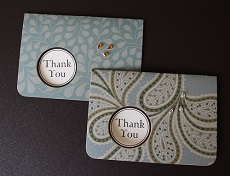
Do you want a unique way to tell someone thank you? Technology has permitted easy correspondence, but sometimes an email or a text message just won’t do. If you want to engage with people personally, then learning how and when to send thank you cards is essential. Consider the following do’s and don’ts of writing thank you cards.
Prepare an Outline of Your Message
When writing thank you cards, you can script a short outline for your message to help you stay on point while you’re writing.
Begin your thank you card with a polite greeting. Address the recipient by name, then immediately move into your message. Afterward, you’ll want to include specific details that express your gratitude. You could be acknowledging a present you’ve received or a kind act someone has extended toward you.
Finish your message by reminding your recipient how special he or she is to you. Then repeat your thankfulness and end with a complimentary closing.
Let the Context for Your Gratitude Guide You
In your personal life, you might want to thank someone for a gift, whether it be for a birthday, holiday, or any other special event. But you may encounter times when you’ve dealt with a difficult circumstance and want to acknowledge the support you’ve received.
Likewise, professional settings offer many reasons to write and send a thank you card. For example, you may write one to follow up after a job interview, thank hard-working employees, or connect with clients.
Don’t Delay Sending a Thank You Card
Do you know when to send thank you cards? When expressing your gratitude, be sure to create and send a thank you card promptly. If you allow too much time to pass by after you’ve received a gift or met with a business contact, then the person you want to thank may think that you weren’t grateful for the time and attention he or she gave you.
To ensure you send out a thank you card on time, ensure you have the essential supplies on hand. Keep your writing area at home or work stocked with stationery and stamps. After writing the card, place it in the mail immediately. A little time on your part goes a long way toward communicating the value of gratitude to your recipient.
Don’t Overly Embellish Your Message
The point of a thank you card is not to show off your ability to write tremendous text or display your vocabulary prowess. Focus instead on extending your gratefulness by using simple, straightforward prose.
You don’t need to make your message overly fanciful. The best thank you cards are those that simply and succinctly communicate your gratitude in plain language. Display your sincere appreciation for whatever some has done for you.
However you approach writing thank you cards, just remember that people will appreciate it when you personalize a thank you card to them. Use these tips to help you write great thank you cards for any occasion.






